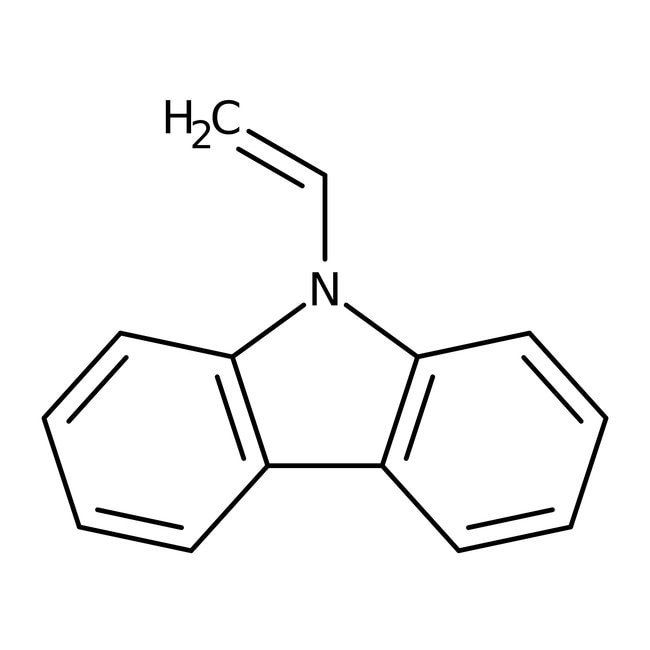Search Thermo Fisher Scientific
Thermo Scientific Chemicals
9-Vinylcarbazole, 98+%, Thermo Scientific Chemicals
Catalog number H56174.22
also known as H56174-22
Price (USD)/ Each
290.00
-
Quantity:
100 g
Price (USD)/ Each
290.00
9-Vinylcarbazole, 98+%, Thermo Scientific Chemicals
Catalog numberH56174.22
Price (USD)/ Each
290.00
-
Chemical Identifiers
CAS1484-13-5
IUPAC Name9-ethenyl-9H-carbazole
Molecular FormulaC14H11N
InChI KeyKKFHAJHLJHVUDM-UHFFFAOYSA-N
SMILESC=CN1C2=C(C=CC=C2)C2=C1C=CC=C2
View more
Specifications Specification Sheet
Specification Sheet
Assay (HPLC)98+%
9-Vinylcarbazole is used as a monomer in the production of poly(vinylcarbazole), a conductive polymer, in which conductivity is photon-dependent. It is also used in the photoreceptors of photocopiers.
This Thermo Scientific Chemicals brand product was originally part of the Alfa Aesar product portfolio. Some documentation and label information may refer to the legacy brand. The original Alfa Aesar product / item code or SKU reference has not changed as a part of the brand transition to Thermo Scientific Chemicals.
Applications
9-Vinylcarbazole is used as a monomer in the production of poly(vinylcarbazole), a conductive polymer, in which conductivity is photon-dependent. It is also used in the photoreceptors of photocopiers.
Solubility
Soluble in acetonitrile.
Notes
Store in a cool dry place. Incompatible with oxidizing agents. Keep container tightly closed.
9-Vinylcarbazole is used as a monomer in the production of poly(vinylcarbazole), a conductive polymer, in which conductivity is photon-dependent. It is also used in the photoreceptors of photocopiers.
Solubility
Soluble in acetonitrile.
Notes
Store in a cool dry place. Incompatible with oxidizing agents. Keep container tightly closed.
RUO – Research Use Only
General References:
- C. Zhang.; H. von Seggern.; K. Pakbaz.;B. Kraabel.; H.-W. Schmidt.; A.J. Heegera. Blue electroluminescent diodes utilizing blends of poly(p-phenylphenylene vinylene) in poly(9-vinylcarbazole).Synth. Met. 1994, 62 (1),35-40 .
- V. Bojanić.; S. Jovanović.; R. Tabaković.;I. Tabaković. Synthesis and electrochemistry of grafted copolymers of cellulose with 4-vinylpyridine, 1-vinylimidazole, 1-vinyl-2-pyrrolidinone, and 9-vinylcarbazole.J. Appl. Polym. Sci. 1996, 60 (10),1719-1725 .

